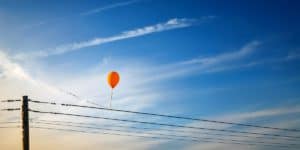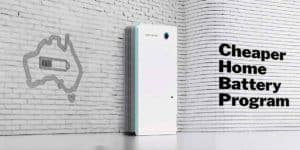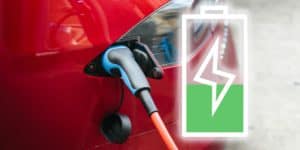Buying Solar

Energy Saving Guide
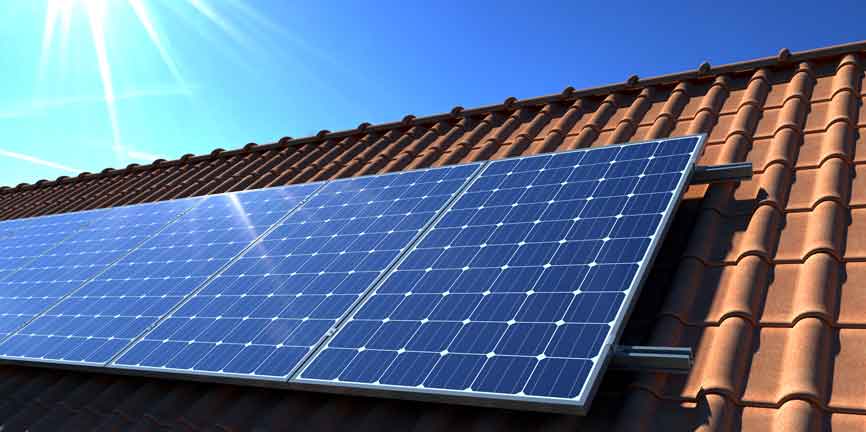
Solar buyers guide
By far, the biggest move that most households can make to save money on energy is adding solar.
While the price of electricity has more than doubled over the last decade, the cost of solar PV panels has fallen by 80%*. So it’s no surprise that around three million households have installed solar, making Australia a world leader. To help you get it right, WATTever’s Solar buyers guide unpacks what you need to know. For information about how to get the most from your solar set up, see our Solar owners guide.
*Source: energycut.info/economy-report
Get informed and buy better solar
1. Why go solar?

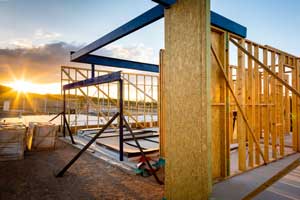

Support renewables: Installing solar makes a real difference to a household’s carbon footprint by reducing fossil fuel use. It all adds up. Now over three million Australian solar owners have changed our energy grid. In 2022, the Eastern Australian electricity grid (NEM) was powered by 35.2%^ renewables. More than a quarter of this renewable energy was rooftop solar.
^Source: opennem.org.au/energy/nem

How much can solar save me?
- The size of your solar system
- Orientation, angle and any shading of the system
- How much of the solar energy you will “self-consume”
- The electricity plan you select
Likely solar savings
Where households can add a sufficiently sized PV set up, then solar will be the single biggest action they can take to limit energy costs. In this case, for 6kW system, typical savings can range from 25% to more than 50%. Some households with bigger systems (or very frugal energy use) can achieve $0 electricity bills due to feed-in credits offsetting their night time energy use. Be aware that if you select a bigger system in order to wipe out energy bills, there is a larger outlay and a longer payback period.
Estimating your savings

How fast will solar pay off?
The Australian Energy Council calculates the payback period for a new 5kW solar PV system by location across Australia in their quarterly Solar Reports. The payback period is the year when the total savings generated by the system (including feed-in tariffs received and the grid energy costs avoided) exceed the purchase price. The Australian Energy Council analysis accounted for different electricity costs in each market, plus the average cost of a new system and the solar generation at each location (assuming an unshaded north facing installation). Then they factored a discount rate for the value of money over time. In summary, the results explain why solar installs across Australia have exploded in recent years.
Solar PV payback for a 5kW System
| Location | Payback period |
|---|---|
| Adelaide | 3 years |
| Brisbane | 4 years |
| Canberra | 5 years |
| Darwin | 7 years |
| Hobart | 8 years |
| Melbourne | 7 years |
| Perth | 4 years |
| Sydney | 5 years |
2. Solar explained
How solar works
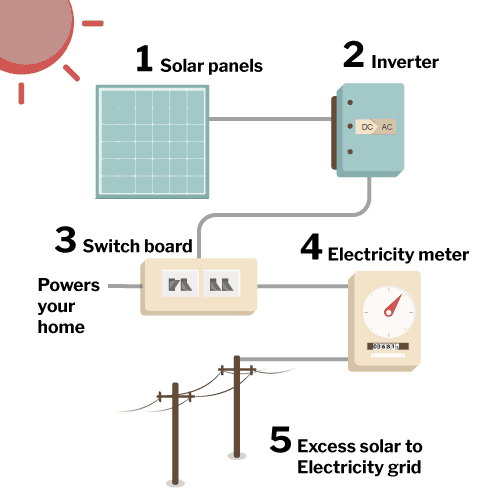
1. Panels of Solar Photovoltaic (PV) cells collect sunlight and produce Direct Current (DC) electricity.
2. An inverter “converts” the DC energy generated in the solar panels, into Alternating Current (AC 240V).
3. The inverter connects to the homes electricity switchboard to power the home.
4. An electricity meter on the switchboard measures the amount of energy taken from the grid (in units called kWh) along with any excess solar electricity that is pushed back out to the grid.
5. Solar owners receive a feed-in tariff credited back to their account for any excess power sent back into the network.
Solar panel types
There are three main types of panel technology.Monocrystalline solar cells
Monocrystalline solar cells are sliced from a single silicon crystal. Panels appear black because of the way that light reacts with the crystals. They often contain angled edges around each cell. (caption) Monocrystalline cells are more expensive because they require more energy-intensive manufacturing.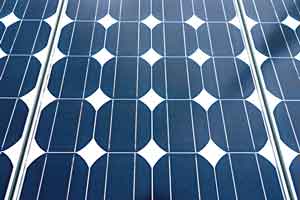
Monocrystalline solar panel
Polycrystalline solar panels
Polycrystalline solar cells are composed of small pieces of silicon crystals, melted together before being cut into wafers. The cells are less expensive to produce than Monocrystalline cell. Panels typically appear blue.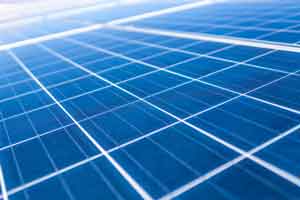
Polycrystalline solar panel
Thin-film solar panels
Thin-film solar panels are made from a range of materials and are the cheapest type of solar panel to produce. These cells are up to 350 times thinner than the wafers use in crystalline cells, so are a lot lighter. Thin-film solar panels come in both blue and black shades.
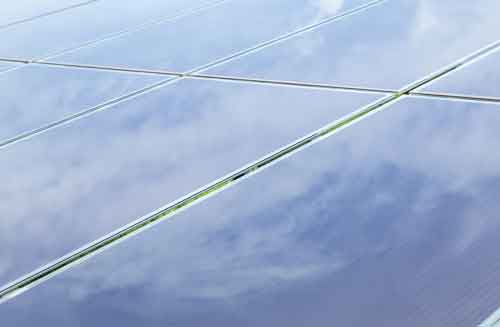
Which cell type is best?
The ratio of cost to power for monocrystalline and polycrystalline cells is similar. Most solar buyers could choose either – with lower-cost polycrystalline saving money upfront. The benefit of monocrystalline panels is that they offer a higher space efficiency at a higher price. So, if there’s not much space available on your roof, and you want to maximise electricity savings, then pick higher-efficiency, monocrystalline solar panels can help.
Installers typically select Thin Film panels for installations on large, commercial roofs that won’t handle the added weight of crystalline cells. If you have a lot more room to install panels, some sites can support the lower efficiencies of thin-film panels.

Two more sides of solar
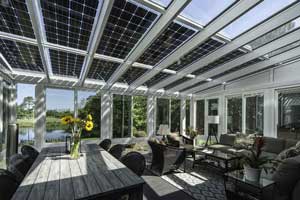
3. Solar sizing and positioning
Making sense of system sizing
Why is the inverter capacity a different size to the panel system? Panels typically generate around 80% of their rated capacity. So a system with a nominal rating of 6kW of panels made up of 18 panels x 325W capacity, will generate up to 4.8kW at peak output. A 5kW inverter would comfortably handle the maximum output generation of this PV system. There’s no value in extra inverter capacity unless you want to add more panels in the future.
Location, location: Positioning solar
Ideally, solar panels should face north to make the most of the sun. They should be angled between 30 to 40 degrees to capture maximum light, varying by latitude. Panels may need to be tilted in a frame depending on whether the roof is sloping or flat. West-facing panels are an option to generate energy later in the day when usage can be high. This especially helps power air conditioning on long summer afternoons.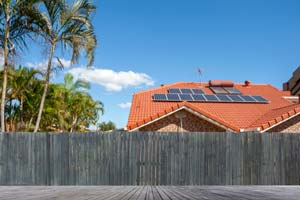
Stay out of the shadows

4. How much solar do I need?
First up, you’ll want to understand how much energy you are using today. That’s because you’ll get the biggest benefit from ‘self-consumption’. It’s best when the system is sized to supply the energy you use during the day with some potential for you to try to shift more energy use into the solar window (hello timers on appliances, air conditioners and more).
By using the energy from your solar and sidestepping the cost of buying more expensive electricity from the grid, you stand to make a better return. While any excess solar will provide you with feed-in credits, these aren’t nearly as valuable as self-consumption.

Also, it can be worthwhile thinking about how you might use electricity differently down the track. For example, you may be considering purchasing a battery or even an EV in the next couple of years. Ask your system designer to show you what a future-ready system would involve.
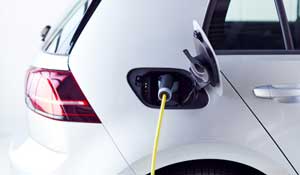
Solar PV size roof space and daily kWh generation
5. What does solar cost?
- government incentives and support schemes such as the Federal STC subsidy or State-based schemes – like Victoria’s Solar Homes,
- panel quality, type and number
- inverter quality, type and size
- roof fixing frames and other systems
- installation costs relating to height and accessibility along with the kind of roof; whether tiled, metal or concrete
- any after-sales service agreements
Here’s a guide on the average system costs courtesy of Solarchoice who track thousands of solar installs. The bottom line is, it’s well worth comparing offers and shopping around.
Average solar panel costs by city & system size (February 2025)
| 3kW | 5kW | 7kW | 10kW | |
|---|---|---|---|---|
| All | $4,010 | $5,150 | $6,670 | $8,990 |
| Adelaide, SA | $3,830 | $4,620 | $5,890 | $7,920 |
| Brisbane, QLD | $3,800 | $4,780 | $6,150 | $8,200 |
| Canberra, ACT | $4,110 | $4,820 | $6,420 | $8,040 |
| Darwin, NT | $4,730 | $7,600 | $10,060 | $13,060 |
| Hobart, TAS | $4,710 | $6,030 | $7,490 | $11,130 |
| Melbourne, VIC | $3,810 | $4,630 | $5,950 | $7,860 |
| Sydney, NSW | $3,990 | $4,820 | $6,050 | $7,800 |
| Perth, WA | $3,120 | $3,880 | $5,340 | $7,930 |
Courtesy of solarchoice.net.au
It pays to compare
Across Australia, there are hundreds of solar retailers and installers offering an array of products from budget to premium equipment. By doing your research and asking the essential questions – see checklist below – you can find the right system and installer for you. Ultimately, you get what you pay for.
Deals with prices that seem ‘too good to be true’ are likely to be just that. Will a 7kW system with a headline price of $3,999* with a bunch of disclaimers go the distance? How likely will that be the ‘final’ price when installed. Is it possible for this company to respond if there’s a problem? Equally, it’s possible to pay too much.

6. Solar buyers checklist
Here are the questions you’ll want to consider when you get closer to buying.
Ask about your system
What size system do you recommend? How much electricity will it generate each day (summer/winter)? Is there a size limit to how much solar I can install on my property?
How much will it save on my bills based on my current electricity usage?
What’s the forecast payback period?
Can I add more panels or a battery down the track? What if I wanted to charge an EV?
Get a written quote with a breakdown of price to install on your property. Site access, number of storeys, roof type and a bunch of factors will impact the final cost. Make sure this includes all available rebates, and the installer will complete the rebate and regulatory paperwork on your behalf.
Check out the retailer/installer
Is the solar retailer accredited? Industry schemes such the CEC Approved Solar Retailers provide a 5-year system warranty and agree to a Code of Conduct
Ask how long they have been in business? Will they be around in 2 years to fix a problem?
Is the solar installer accredited? Industry schemes such as the CEC Accredited Installers undertake ongoing professional development and training plus commit to a Code of Conduct.
Read online reviews of installers and request local references.
Check out the products
Check online reviews of the recommended system components, including the specified panels and inverter.
Review the warranty on offer. Look for five years warranty on the inverter and ten years on panels. Performance warranties are very hard to claim on because it’s not easy for homeowners to validate the performance of an individual panel.
Find out if the panel and inverter makers have an Australian office? A local office could assist you in making a warranty or service claim in the future.
Contract
Check the fine print in the contact, particularly around the warranty and service offerings.
After installation
Your electricity switchboard should have a PV label added to identify that your home as a solar energy source (for safety reasons).
Check you are receiving a feed-in credit on your first bill. While uncommon, if the installer hasn’t provided the paperwork to the network, then customers can miss out on their solar feed-in tariffs as a result.
7. Finance options for solar buyers
Sweet schemes
Some may be eligible for State Government schemes – such as Solar Homes Victoria that include interest-free loans and additional incentives.
Buy or Borrow
Purchasing outright is a choice for many solar buyers but finance is also widely available. Bear in mind; if you decide to finance solar, you’ll ultimately pay more to borrow funds. Commercial interest-free loans will impact the cost or value of what you’re buying.
Put it on your home loan
If you’re buying, renovating or building, then adding solar to the home loan could offer a lower cost option. With interest rates down, and solar providing a 15-20% annual ROI, in around five years, the savings have paid for the systems. Along the way, you could make extra repayments afforded by savings from lower energy bills, using solar to help chip away at the mortgage.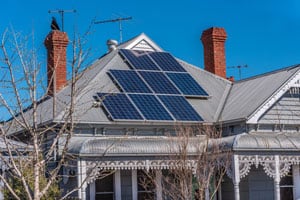
8. New meters and tariffs
Hello smart meter
A meter upgrade may be required when you install solar. That’s because, if you have an accumulation meter, it can only keep track of total electricity use. An interval or smart meter, which is bi-directional will measure the amount of electricity imported from the grid every 30 minutes plus any electricity you export back into the grid.
If you opt for a smart meter, these have the advantage of being read remotely avoiding missed meter reads and estimated bills. Also, some retailers share the smart meter’s data with customers via apps. This information can assist you to monitor your energy use.
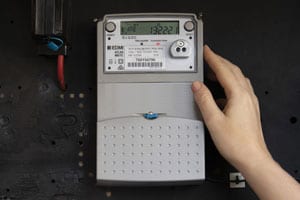
Tariff shift





